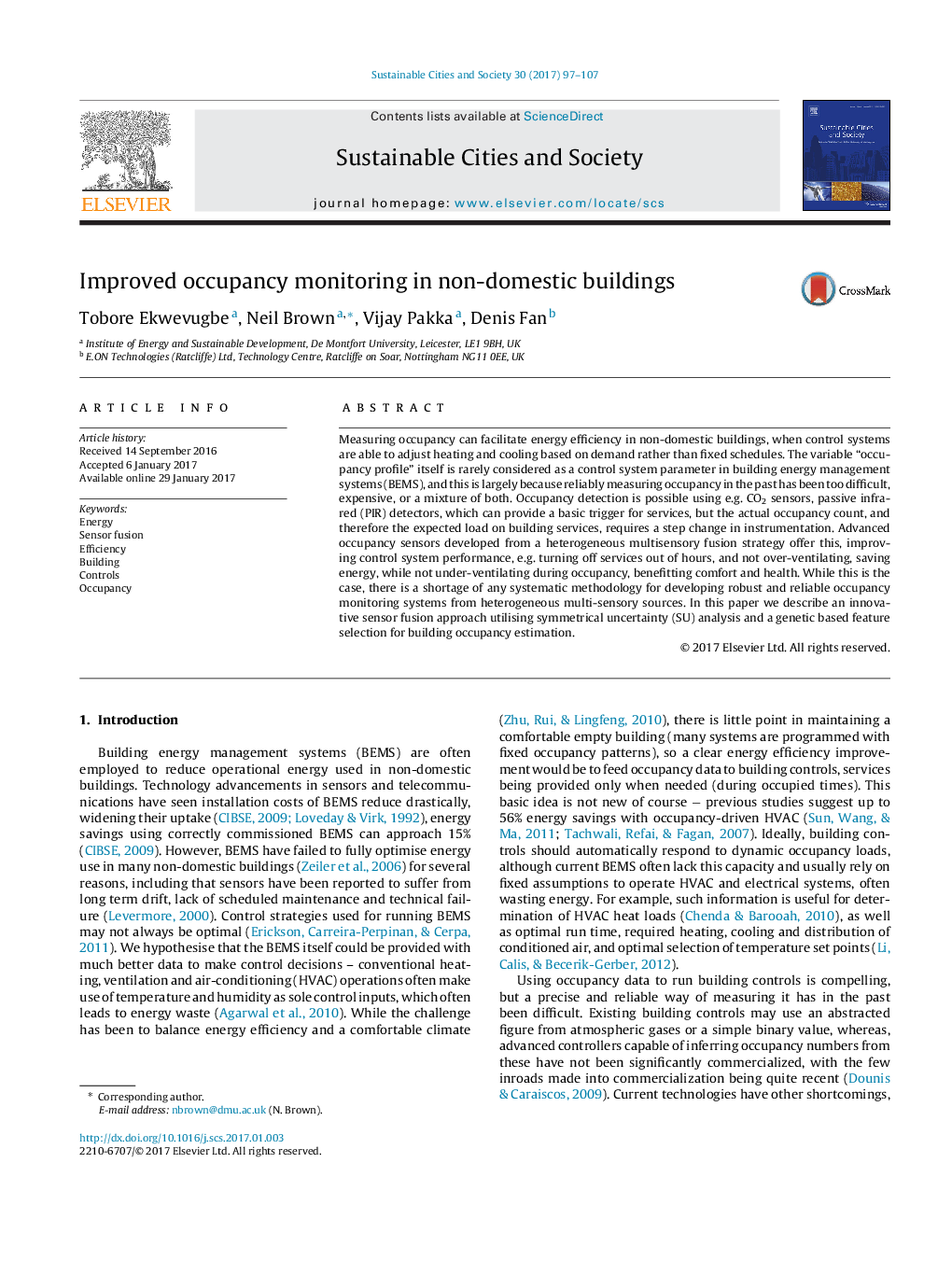| Article ID | Journal | Published Year | Pages | File Type |
|---|---|---|---|---|
| 4928143 | Sustainable Cities and Society | 2017 | 11 Pages |
Abstract
Measuring occupancy can facilitate energy efficiency in non-domestic buildings, when control systems are able to adjust heating and cooling based on demand rather than fixed schedules. The variable “occupancy profile” itself is rarely considered as a control system parameter in building energy management systems (BEMS), and this is largely because reliably measuring occupancy in the past has been too difficult, expensive, or a mixture of both. Occupancy detection is possible using e.g. CO2 sensors, passive infra-red (PIR) detectors, which can provide a basic trigger for services, but the actual occupancy count, and therefore the expected load on building services, requires a step change in instrumentation. Advanced occupancy sensors developed from a heterogeneous multisensory fusion strategy offer this, improving control system performance, e.g. turning off services out of hours, and not over-ventilating, saving energy, while not under-ventilating during occupancy, benefitting comfort and health. While this is the case, there is a shortage of any systematic methodology for developing robust and reliable occupancy monitoring systems from heterogeneous multi-sensory sources. In this paper we describe an innovative sensor fusion approach utilising symmetrical uncertainty (SU) analysis and a genetic based feature selection for building occupancy estimation.
Related Topics
Physical Sciences and Engineering
Energy
Renewable Energy, Sustainability and the Environment
Authors
Tobore Ekwevugbe, Neil Brown, Vijay Pakka, Denis Fan,
